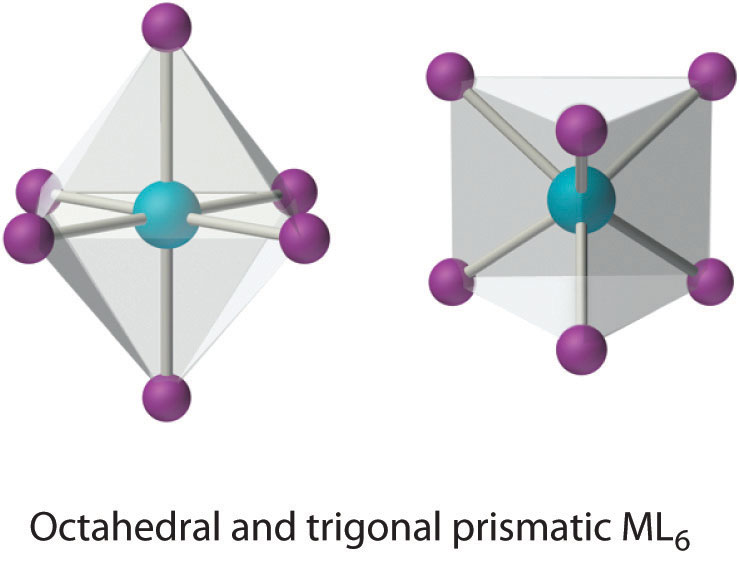Isomerism in Coordination Compounds-

source : www. vidhyarjan.com
Isomerism in Coordination Compounds-
The coordination compounds with the same molecular formula but having their ligands attached to the central metal atom indifferent ways are termed as isomers this phenomenon is called isomerism.
Types of isomerism in co- ordination compounds.
(A) Structural isomerism (B) Stereo isomerism
- Ionisation isomerism (a) Geometrical isomerism
- Hydrate isomerism (b) Optical isomerism
- Linkage isomerism
- Coordination isomerism
- Coordination Position isomerism
Structural Isomerism
The isomers having same molecular formula but different structural arrangement of atoms or groups of atoms around the central metal i on are called structural isomers & phenomenon is called structural isomerism.
- Ionisation isomerism –
Compounds having the same molecular formula but give different ions is solution are called ionisation isomers & phenomenon is ionisation isomerism.
Ex. 1. [Co(NH3)5Br] So4 & [ Co ( NH3)5So4]Br
- [Co(NH3)4Cl2]No2 & [ Co(NH3)4Cl(No2]Cl
- [Co(en)2(No2)Cl]SCN & [ Co(en)2(No2) SCN]Cl
Hydrate Isomerism –
Compounds having same molecular formula, but differ in the number of water molecular in the coordination sphere are called hydrate isomers the phenomenon is called hydrate isomerism.
Ex (1) [ Cr(H2O)6]Cl3 & [Cr(H2O)5 Cl] Cl2 H2O & [Cr(H2O)4Cl2) Cl.2H2o
(2) [Co(en)2(H2O)Cl]Cl2 & [Co(en)2Cl2] Cl.H2O
- Linkage Isomerism –
Compounds having same molecular formula but differ in the mode of attachment of ligand to the metal are called linkage isomers & phenomenon is called linkage isomerism.
-NO2 gr. has two modes of attachment.

Ligand SCN– ion has two modes of attachment –SCN –NCS
Ex.1 [Co(NH3)5(NO2)]Cl2 & [Co(NH3)5(ONO)Cl2
Ex.2 [(CO)5Mn (SCN)] & [(CO)5Mn-(NCS)]
- Coordination isomerism –
Compounds having same molecular formula & both Cationic & anionic complexes. But they differ in the different distribution of ligands.
Ex. 1 [Co(NH3)6][Cr(CN)6] & [Co(CN)6](Cr(NH3)6)
Ex. 2 [Cr(NH3)6][Cr(CN)6] & [CrNH3)4(CN)2] & [Cr(NH3)2(CN)4]
Co-ordination – Position isomerism –
Poly nuclear coordination compounds having same molecular formula & same number of coordinating groups & are distributed in a different way around the metal ion are called coordination position isomers & phenomenon is called coordination position isomerism.
Ex.1


Stereo isomerism –
Compounds having same molecular formula but different in the spatial arrangement of atoms or groups, then such compounds are known as stereo isomer & phenomenon is called stereo- isomerism.
- Geometrical or cis-trans isomerism –
Compounds having same molecular formula but differ in the relative position of ligands in space. If ligands occupy position adjacent to each other, then cis, if opposite to each other, then trans. This isomerism is also known as cis- trans isomerism.
Ex. (1) Square planar complexes of the types Ma4, Ma3b, Mab3 do not show geometrical isomerism.
Ex. (2) Square planar complexes of the type Ma2b2 can exist in cis & trans from.

(cis isomer) ( trans isomer)

Ex. (3) Square planar complexes of the type M a2 b e are found as cis – trans isomers.

Ex. [Pt(py)2(NH3)Cl]
Ex. (4) Square planar complexes of the type Mabcd have three geometric isomers.

Ex. [ Pt(NO2)(py)]
Geometrical isomerism in octahedral complexes
- Octahedral complexes of the type [M a4b2] or [ M a2b4] or [ M a4bc] show geometrical isomerism. Metals Co(III) , Cr(III), Rh(III), Ir(III), Pt(IV), Os(II) & ligands as NH3, Py, H2O, Cl, Br, CN show this isomerism.

(Cis) (Trans)
violet green
- Complexes having bidentate ligands of the type [M(aa)2b2] or [M(aa)2bc] show this isomerism, metals Co(III), Cr(III), Ir(III), Pt(IV) & ligand aa is ethylene diamine, b & c are ligands NO2–, I–, Br–, Cl–, NH3, Py etc. show this isomerism.
(cis-form) (trans form)
- Octahedral complexes like [ Ma3b3] show geometrical isomerism.
Ex. [Rh(py)3Cl3] exists in cis & trans form.
(cis form) (trans-from)
- Octahedral complexes with six different ligands of the type [M(abcdef)] show geometrical isomerism .
Ex. [pt(py)(NH3)(No2)(Cl)(Br)I]
Optical isomerism –
The compounds having same molecular formula but rotate the plane of polarised light in opposite direction, are called optical isomers & phenomenon is optical isomerism.
The isomer which rotates the plane of polarised light to the right is known as dextrorotatory & which rotates the plane of the polarised light to the left is known as laevorotatory.
Optical isomerism in complexes with co-ordination on.4-
(i) Square planar complexes do not show optical activity due to plane of Symmetry.
(ii) Tetrahedral complexes which contain unsymmetrical bidentate ligand show this isomerism.
Ex. 1. bis- ( Benzoyl acetonato ) beryllium (II)
- bis ( glycinato ) nickel (II)
Optical isomerism in metal complexes having coordination no.6-
- Complexes of the types [M(aa)3] where aa is bidentate ligand exist optical isomerism.
Ex. [Co(en)3]Cl3
- Complexes of the type [M(aa)2bc] or [M(aa)2b2] show optical isomerism.
- Complexes of the type [M(aa)b2c2]
Ex. [CoCl2(en)(NH3)2]+







